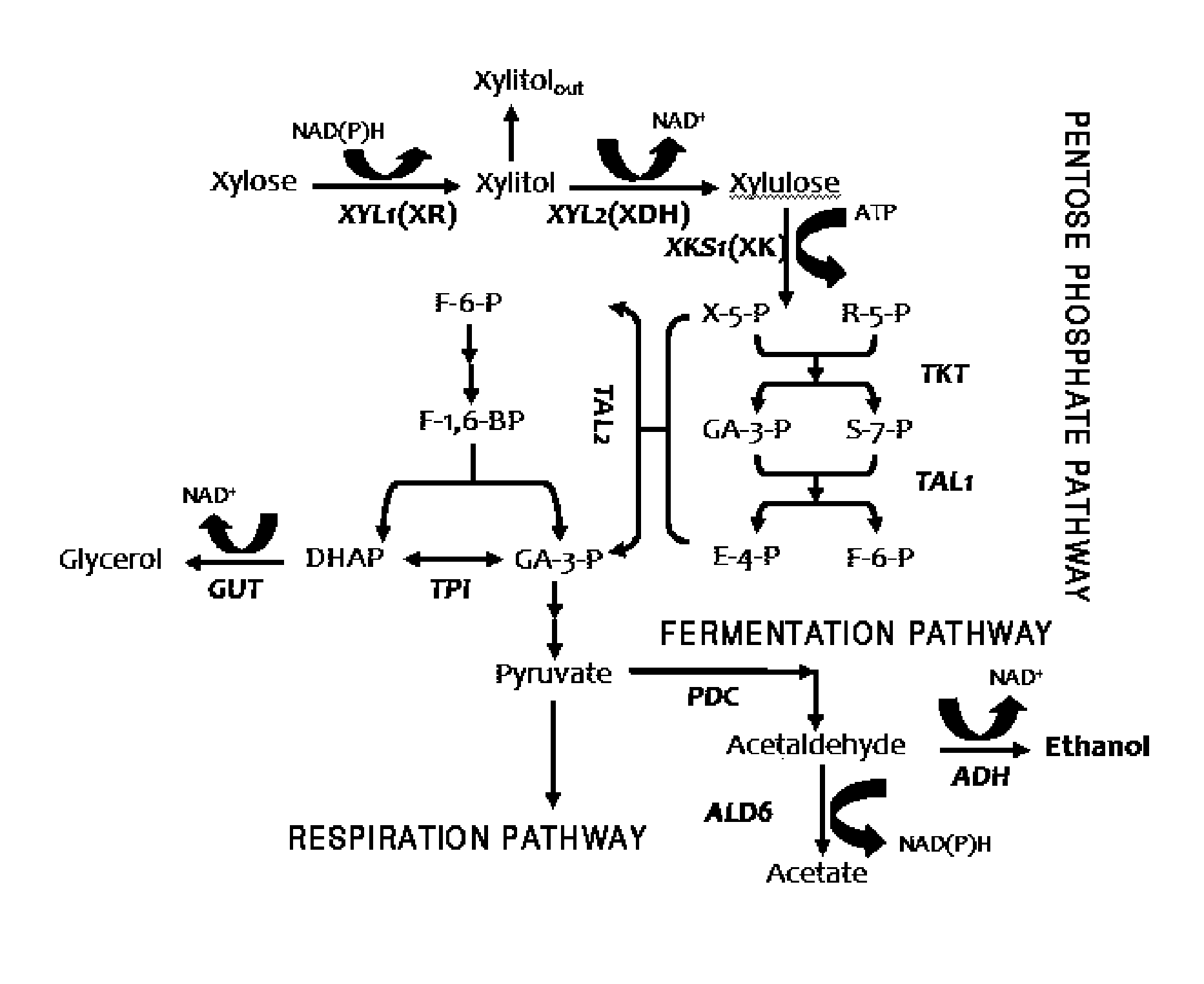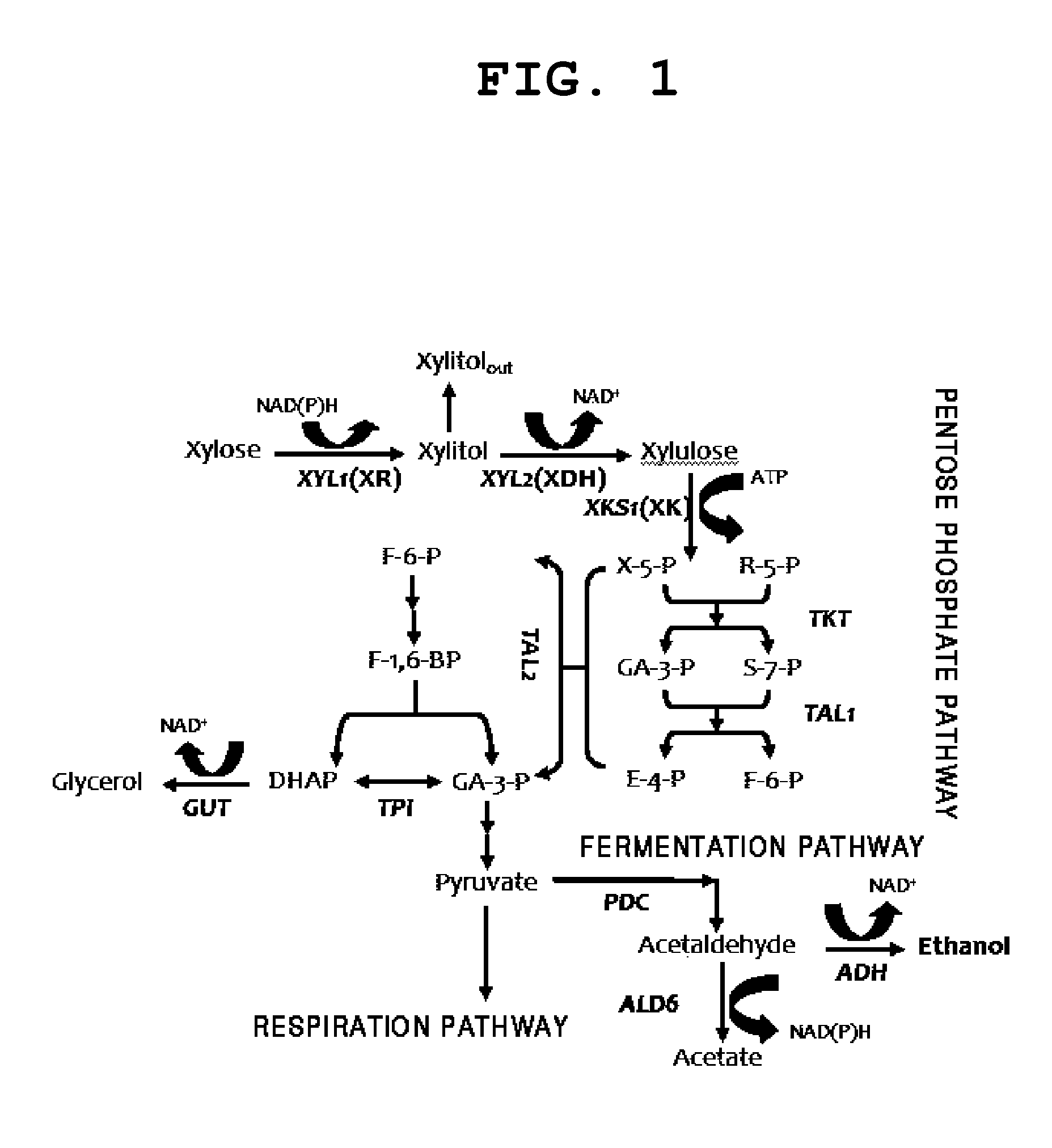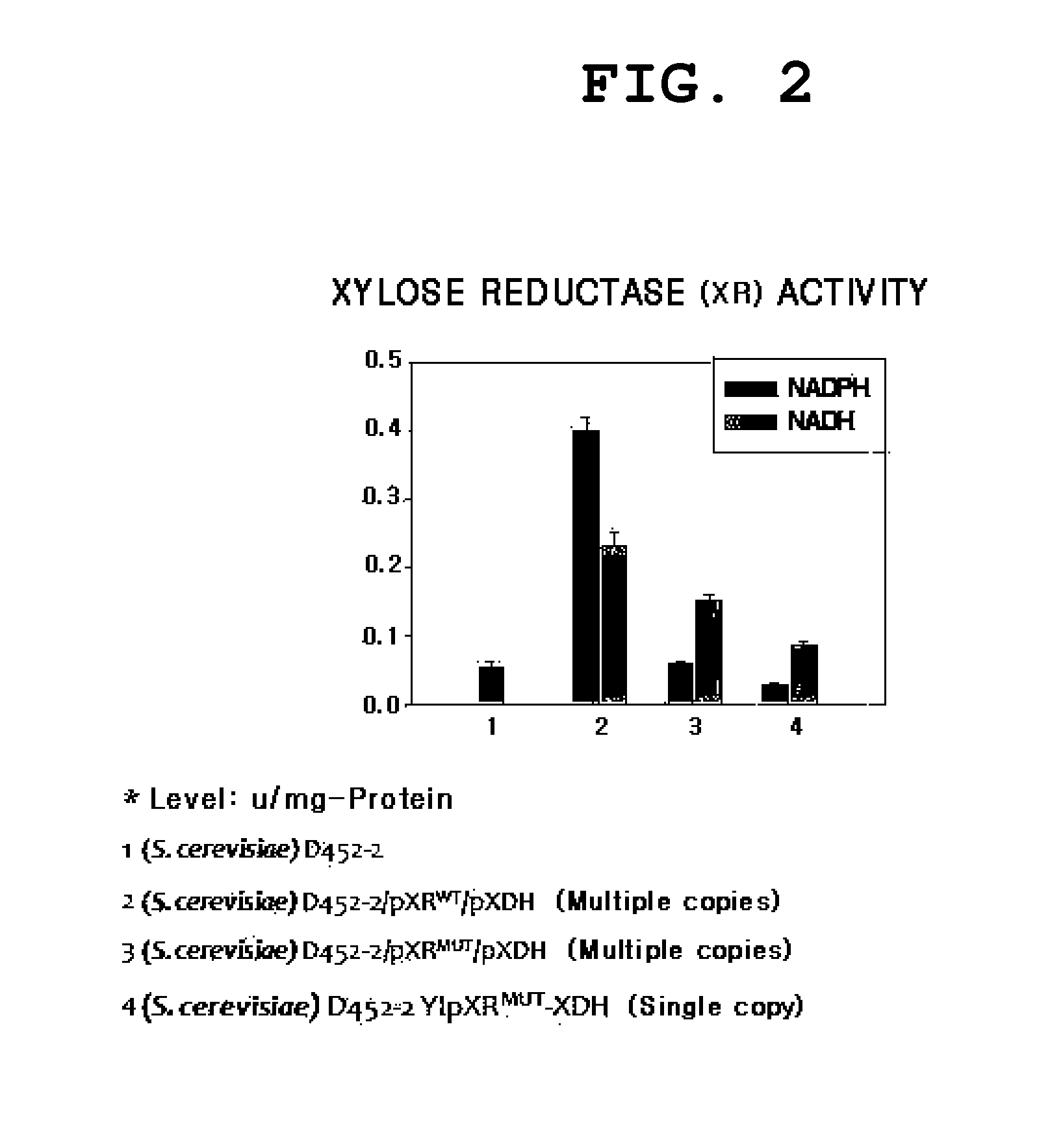Method for producing ethanol from xylose using recombinant saccharomyces cerevisiae involving coupled use of nadh and nad+
a technology of saccharomyces cerevisiae and xylose, which is applied in the field of producing ethanol from xylose using recombinant saccharomyces cerevisiae, can solve the problems of ethanol not cost competitive, ethanol is becoming increasingly cost competitive, and will eventually overtake the price competitiveness of petroleum, etc., and achieves high production efficiency, prevents the production of acetic acid as a by-product, and reduces the effect of a
- Summary
- Abstract
- Description
- Claims
- Application Information
AI Technical Summary
Benefits of technology
Problems solved by technology
Method used
Image
Examples
example 1
Production of Transformed Saccharomyces cerevisiae Strains
[0033]In this example, recombinant Saccharomyces cerevisiae used for the following Examples 2 to 4 were prepared.
[0034]Meanwhile, gene recombinant is not described in detail in this example. Gene recombination and methods for producing transformation systems are well-known in the art, genetic engineering, and a detailed description thereof is thus omitted.
[0035]The Saccharomyces cerevisiae D452-2 used herein as a host was obtained from professor Makino of Kyoto University in Japan (Seiya Watanabe, Ahmed Abu Saleh, Seung Pil Pack, Narayana Annaluru, Tsutomu Kodaki and Keisuke Makino. 2007. Ethanol production from xylose using recombinant Saccharomyces cerevisiae expressing protein-engineered NADH-preferring xylose reductase from Pichia stipitis. Microbiol.153:3044-3054).
[0036]Vectors, YEpM4XR(WT), YEpM4XR(R276H) and pPGKXDH(WT) were also collected from professor Makino of Kyoto University in Japan and the XR(R276H) enzyme muta...
example 2
Fermentation of Xylose Using NADH-preferring XR Rather than NADPH-dependent XR
[0041]In order to confirm the effects of the fermentation using a NADH-dependent XR mutant (hereinafter, also referred to as “XRmut”), rather than NADPH-dependent XR, on the metabolism of xylose, the following experiments were performed.
[0042]The strain used herein was D452-2 / pXRMUT / pXDH into which XRmut and XDH are episomally integrated in the form of plasmids. The substrate used herein was xylose and aerobic fermentation was performed. D452-2 / pXRWT / pXDH into which wild-type NADPH-dependent XR (hereinafter, referred to as “XRWT”) and XDH are episomally integrated in the form of plasmids was used as a control group strain.
[0043]The fermentation results are shown in FIG. 3 and the fermentation using XRmut exhibits superior xylitol production efficiency, as compared to the fermentation using XRWT. This is the reason that XRmut uses NADH wherein its amount present in the body is greater than NADPH. The ultima...
example 3
Fermentation of Ethanol Using SX2, SX3 and SX5 Strains Produced in Example 1
[0044]Among the strains produced in Example 1, SX2, SX3 and SX5 are used to ferment ethanol.
[0045]SX2 is a strain into which XRmut and XDH are integrated into the genome via homologous recombination, and SX3 is a strain additionally integrated into the delta sequence on the genome to increase ethanol production efficiency for SX2. In addition, SX5 is a strain in which transaldolase 1 (TAL1) is additionally over-expressed to improve the metabolic rate of the pentose phosphate pathway for SX3.
[0046]A multi fermentation bath (B.Brown Corp.) with a size of 1 L was used for fermentation and operation volume was 500 mL. The fermentation bath was maintained at a temperature of 30° C. and a fermentation solution was maintained at pH of 5.5. The fermentation was carried out using microaerobic fermentation wherein stirring is performed at a rate of 300 rpm and aeration is performed at a rate of 0.1 vvm.
[0047]The micro...
PUM
| Property | Measurement | Unit |
|---|---|---|
| temperature | aaaaa | aaaaa |
| concentrations | aaaaa | aaaaa |
| affinity | aaaaa | aaaaa |
Abstract
Description
Claims
Application Information
 Login to View More
Login to View More - R&D
- Intellectual Property
- Life Sciences
- Materials
- Tech Scout
- Unparalleled Data Quality
- Higher Quality Content
- 60% Fewer Hallucinations
Browse by: Latest US Patents, China's latest patents, Technical Efficacy Thesaurus, Application Domain, Technology Topic, Popular Technical Reports.
© 2025 PatSnap. All rights reserved.Legal|Privacy policy|Modern Slavery Act Transparency Statement|Sitemap|About US| Contact US: help@patsnap.com



